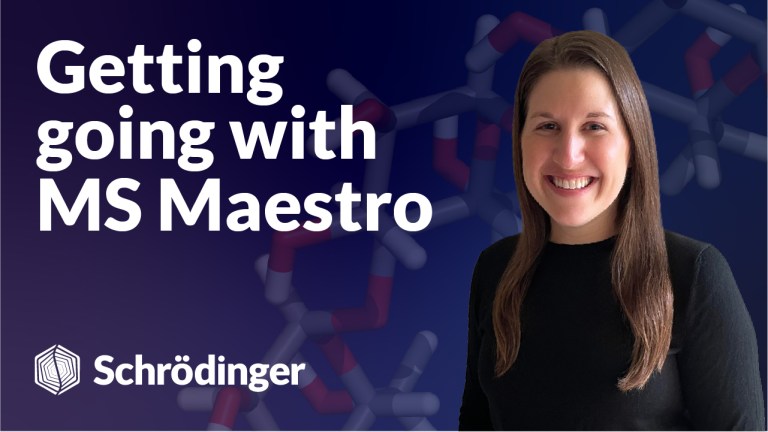Free learning resources
Quickly learn how to integrate Schrödinger technology into your research. From overviews to deep dives, you can find information about applications, workflows, and analysis here.
Quickly learn how to integrate Schrödinger technology into your research. From overviews to deep dives, you can find information about applications, workflows, and analysis here.
 Video
Materials Science
Video
Materials Science
A free video series introducing the basics of using Materials Science Maestro.
An introduction to Materials Science Maestro, covering basic navigation, an intro to building models and several of the key functionalities of the graphical user interface.
Comprehensive reference documentation covering materials science panels and workflows.
Self-guided step-by-step introductions to various workflows with example files for getting comfortable with Schrödinger tools.
Short video overviews of specific introductory and scientific topics, including summaries of new release features.
A one-page PDF that visually describes the panel or workflow.
Machine Learning Force Fields (MLFFs) offer a novel approach for predicting the energies of arbitrary systems.
 Video
Materials Science
Video
Materials Science
The video demonstrates how to use the Disordered System Builder within Schrödinger’s Materials Science Suite to prepare systems for molecular dynamics simulations.
 Video
Materials Science
Video
Materials Science
This video demonstrates how to use the 2D Sketcher within Schrödinger’s Materials Science Maestro for building and editing molecules, covering its toolbar, drawing area, and various palettes.
Get an overview of the Coarse Grained Mapping panel for mapping all-atom structures to coarse grained models.
Get an overview of the Visualize Restraints panel for displaying restraints in a cms structure.
Get an overview of the ML Model Manager for organizing and retraining outdated ML models.
Get an overview of the MS Maestro Welcome panel for navigating old and new project, changing your work directory, and more.
Get an overview of the MLFF Calculations panel for predicting quantum mechanical calculations for systems using machine learning force fields.
Learn how to use machine learning force field optimization methods to prepare and simulate various systems.
Efficient molecular dynamics (MD) simulation tool for predicting liquid viscosity and diffusions of atoms and molecules.
Automated workflows for design, optimization, and unsupervised mechanism discovery in molecular chemistry.
Level up your skill set with hands-on, online molecular modeling courses. These self-paced courses cover a range of scientific topics and include access to Schrödinger software and support.
Connect your students to industry-leading molecular modeling software through a web-based platform. Incorporate molecular modeling in the classroom.